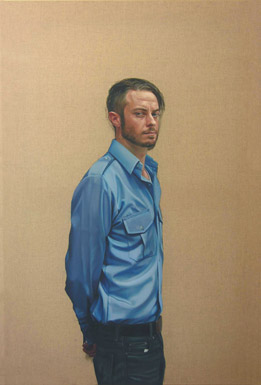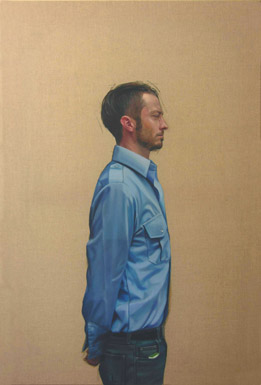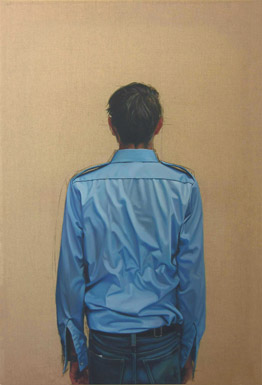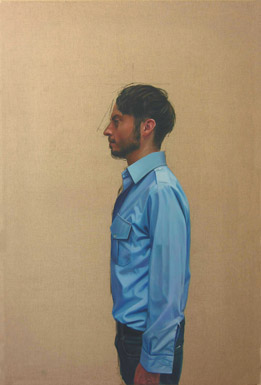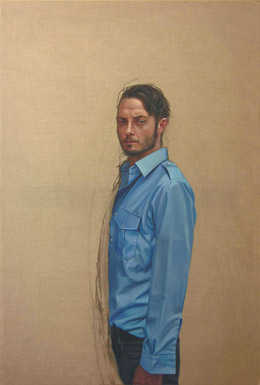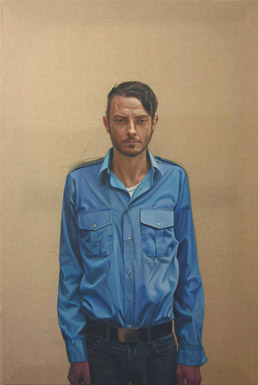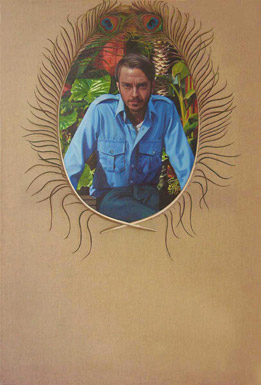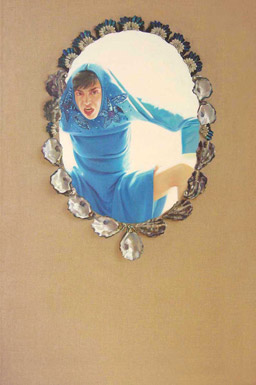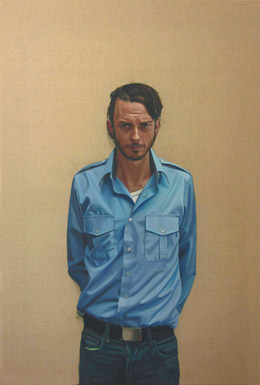
Yvette Coppersmith
‘Blue Series’
11 – 27 June 2009
Coppersmith’s process involves a close, and almost obsessive examination. In discussing Forever in Blue Jeans she comments that there is a need to intimately understand her chosen subject: the way their hair drops and sits on the back of their neck, the slight wrinkles around their eyes, and the way their smile raises subtly on the left. This type of knowledge is something that one often obtains from an extended personal relationship, but that is essential to Coppersmith’s labour. A labour formed by the sublimation of desire. Understanding this, in Blue Head the artist presents herself as a hysterical predatory creature who ravenously pursues her subject. With its ring of empty oyster shells this work presents us with a simple proposition: in this world of Sex and the City and Gossip Girl, is the artist really constrained by and perpetuating this dominant sexualising gaze and what does this imply of her subject?
If Blue Head is an examination of the artist as predator, then Forever in Blue Jeans can be read as an act of analytic assault. Certainly every detail is painstakingly rendered and as Coppersmith’s subject is presented in a number of regimented mug shot like poses it is the artist and viewer who have control here.
Or is it? The heightened and mesmerizing hyper-real tones of the sitter’s blue shirt in Forever in Blue Jeans, as well as the foliage in The Two Blue Eyes suggest another narrative. Certainly, our need to look has created a visual culture where display and desire are intimately bound together. Indeed, this is no big secret – it is why and how Kate Moss sells clothes with silent looks. We look at them and we want what they have, what they are, and often, on the most elementary level, we want them. So to look and conversely, to be seen, are both powerful acts. Coppersmith highlights this with the display of peacock feathers in The Two Blue Eyes, where the sitter is the subject of her gaze, but also ultimately master of his image, for he is the object, the desired vision. And to be desired often equates to real power and whilst the artist is hungry in pursuit of their subject, the visual playing field is more even that it appears.
This complex relationship between artist and sitter is what makes portrait painting so powerful and so fascinating. For there are two different lives and stories, brought together on canvas for us, the viewers. And we are all forever engaged.
Rupert Greene

